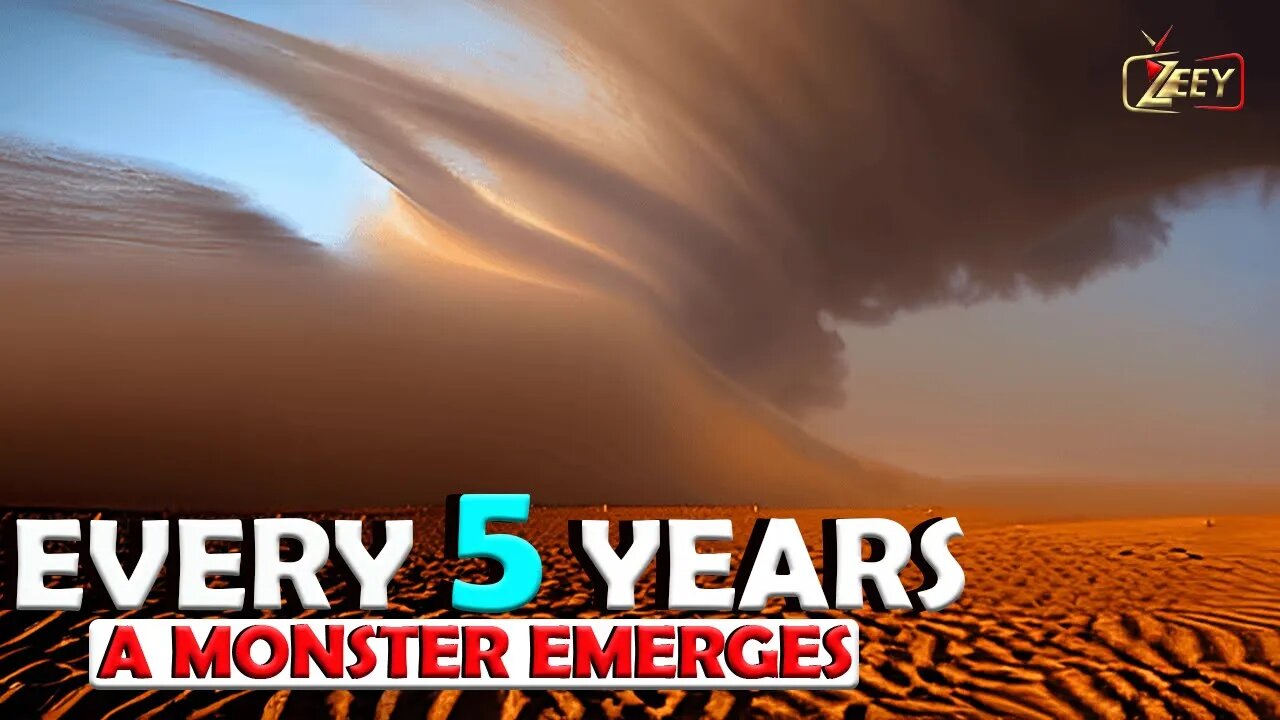Premium Only Content

Mars performs an event every five years that has never occurred on another planet before | Zeey
#MarsWeather#RedPlanet#MarsStorms
Mars is known for its frequent and sometimes massive dust storms. These storms can cover the entire planet and last for days, weeks, or even months. Here are some key points about Mars dust storms:
Frequency: Dust storms on Mars are relatively common, and they can occur throughout the year. However, they are more prevalent during the planet's southern spring and summer, which corresponds to the northern fall and winter.
Causes: Mars has a thin atmosphere composed mostly of carbon dioxide, with only about 1% of Earth's atmospheric density. The low atmospheric pressure allows for more variation in temperature and can lead to strong winds. Dust storms are often triggered by local thermal circulations and can be amplified by global weather patterns.
Seasonal Variation: Mars has a significant axial tilt, similar to Earth. This tilt, combined with its elliptical orbit, leads to seasonal variations that influence the planet's weather. The changing seasons contribute to the occurrence and intensity of dust storms.
Local and Global Storms: Dust storms on Mars can be classified into two main types: local storms and global storms. Local storms are smaller in scale and primarily affect specific regions. Global storms, on the other hand, can envelop the entire planet, obscuring its surface from view. Global dust storms are less frequent but can have a more profound impact on the Martian atmosphere.
Impact on Rovers and Spacecraft: Dust storms pose challenges for robotic missions on Mars, such as the rovers operated by NASA. These storms can reduce sunlight reaching the surface, affecting solar-powered rovers' energy production. Additionally, the fine dust particles can settle on the rovers' solar panels, reducing their efficiency.
Observations from Earth: Dust storms on Mars are often observable from Earth with telescopes. Astronomers track these storms to study Martian weather patterns and to gain insights into the planet's atmospheric dynamics.
Understanding Mars dust storms is crucial for planning and operating missions to the planet, as well as for gaining insights into the atmospheric processes of other planets with thin atmospheres.
#SpaceWeather#MarsExploration#DustStorms#PlanetaryScience#MarsRovers#MartianAtmosphere#SpaceDiscovery#NASAInsight#Astrobiology#SpaceExploration#SolarSystem#MartianClimate#OuterSpaceNews
#SpaceWeatherForecast#MarsWeather#RedPlanet#MarsStorms#MartianSurface#SpaceMissions#CelestialPhenomena
-
 LIVE
LIVE
Jeff Ahern
58 minutes agoNever Woke Wednesday with Jeff Ahern( Leftists losing everywhere)
232 watching -
 9:04
9:04
GBGunsRumble
12 hours agoGBGuns Armory Ep 134 Walther PDP F Pro
15.1K1 -
 13:12
13:12
Melonie Mac
21 hours agoAspyr Teases Possible New Tomb Raider Games in Classic Remastered Style
11.1K7 -
 44:49
44:49
Chrissy Clark
14 hours agoThe Rise Of Female Shooters, ABC News’ $16M Settlement, & MORE I Underreported Stories
9.17K3 -
 2:49:13
2:49:13
InfiniteWaters(DivingDeep)
22 hours agoIt's Over - The Matrix Is Cooked | Infinite Waters
6.54K8 -
 15:49
15:49
Chris From The 740
1 day ago $2.57 earnedThe EAA Girsan Influencer X - Not Your Grandpa's 1911
19K2 -
 25:38
25:38
Producer Michael
17 hours agoLuxury Souq's MULTI-MILLION DOLLAR Watch Collection!
80.1K5 -
 17:06
17:06
Sleep is CANCELED
22 hours ago10 SCARY Videos To Keep You Up All Night!
51.9K2 -
 2:37
2:37
Canadian Crooner
1 year agoPat Coolen | Let It Snow!
33.2K9 -
 2:44
2:44
BIG NEM
13 hours agoWhat's Really Behind the Fake Alpha Male Epidemic?
28K4